Everything You Need to Know About 9 Most Common Plant Pests and Diseases
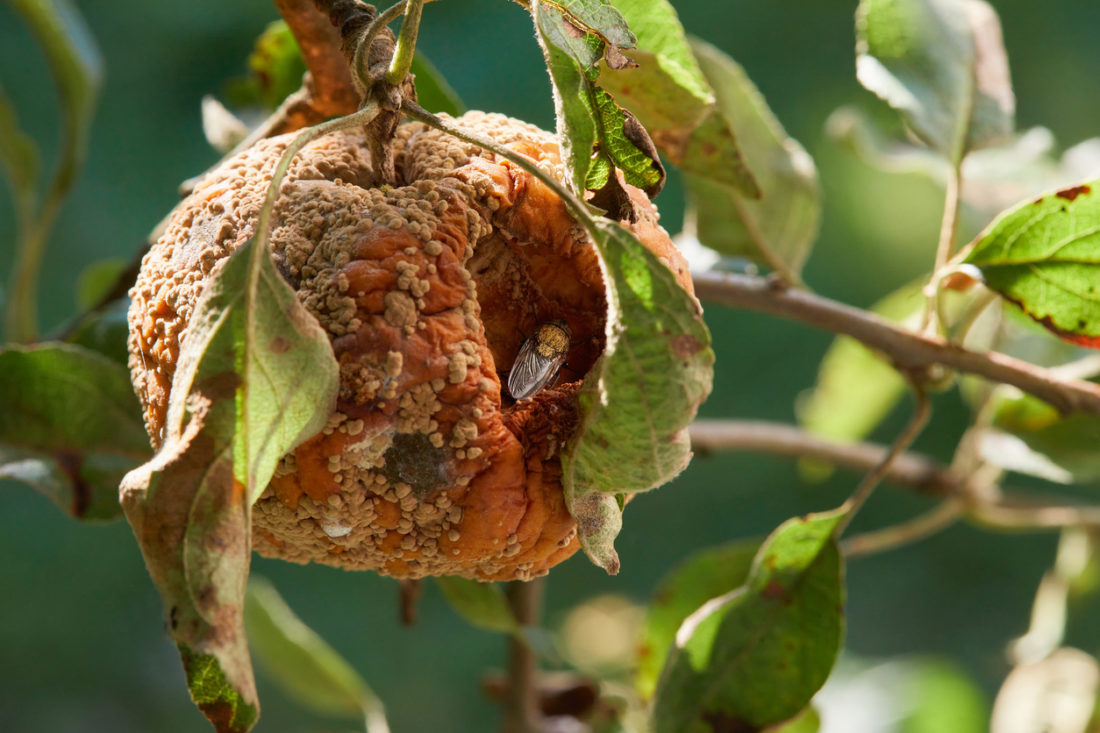
It’s always an unfortunate day when you wander out to your garden, only to notice your plants aren’t doing as well as they once were. Often, the culprit is none other than one of the most common plant pests and diseases. If you’re currently dealing with a plant that is suffering from a plant pest or disease, or if you’re preparing yourself for the inevitable, then we’ve got the information you’re looking for!
Here are 9 of the most common plant pests and diseases, how to identify them, and how to treat them:
What Are Plant Pests and Diseases?
Common plant pests and diseases are nuisances that keep your plants from thriving. Indoor and outdoor plants can both suffer from these diseases or pests. However, some of them may be found more often on either specifically indoor or outdoor plant types.

What Are Plant Diseases?
Just like humans, plants can pick up pathogens that affect their health. Quite simply, they can get sick just like we do! The most common plant diseases come from fungi, bacteria, or even viruses. Often, specific plant diseases are found in specific plant types or species. However, there are some that span across multiple different types of plants.
What Are Plant Pests?
Plant pests are different types of insects that make a home or a meal out of your plants. Some prefer to dig into the soil, while others like to rest directly on the leaves. Some are hard to see, and some make clear-cut paths as they eat up a plant. Usually, plant pests aren’t as particular about what kind of plant they want to feast on or live in.
What Plants are Prone to Pests and Diseases?

All plants can be susceptible to diseases or pests. However, a healthier plant is more likely to ward off plant diseases. Therefore, checking that you’re giving your plants optimal growing conditions is key to preventing plant diseases or pests. Make sure you plant your outdoor plants at the appropriate times. Keep a regular watering schedule and give the plants the right amount of water. This ensures you’re not over or underwatering your plants. Be sure it receives adequate sunlight for the type of plant you have too. Finally, give it the necessary nutrients too. Healthy soil is a key part of preventing diseases.
The Most Common Plant Pests
At some point in a plant’s life, it’ll likely have a few unwanted guests. Those come in the form of plant pests. Fortunately, the most common plant pests are generally easy to treat. First, though, you need to know which ones to look out for and what they appear like on your plant.
Common Plant Pest #1: Aphids
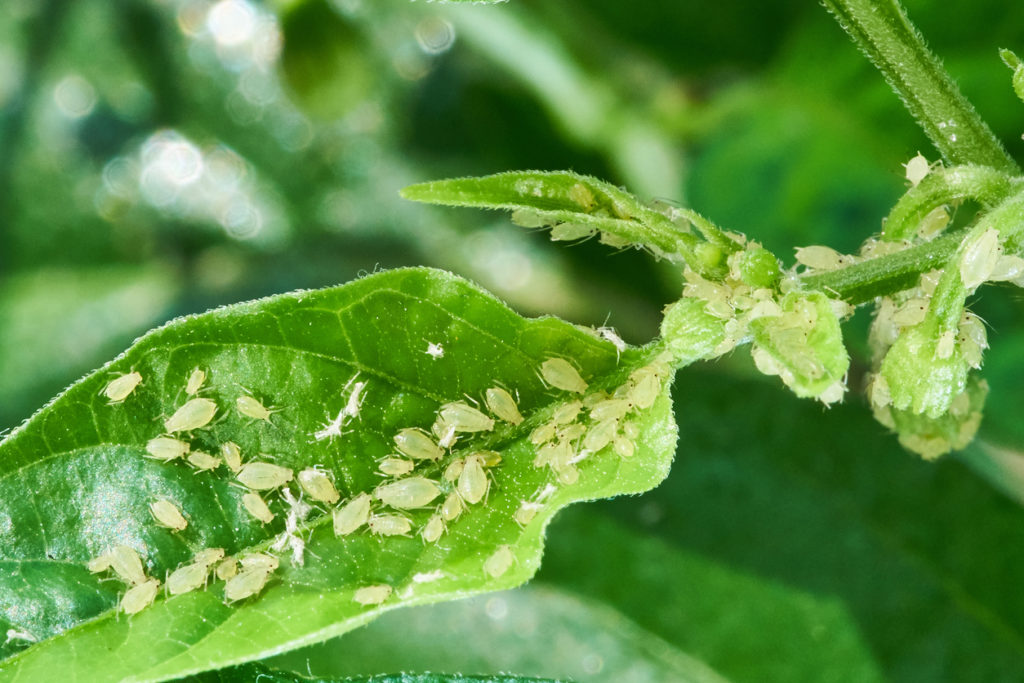
These little bugs, which also include Greenflies, can affect almost every single type of plant. Their lifespan is relatively short, but Queen Aphids can reproduce rapidly. This means a constant stream of new aphids stay on your plant until it’s treated.
How to Identify Aphids
You can spot these bugs by checking under new growth on your plant. They love to attach underneath leaves. They suck on your plant leaves and leave a sticky matter that attracts both ants and certain moulds.
How to Treat Aphids
The best way to treat aphids is by spraying down your plants with an insecticidal soap mixture. Mix 14ml of insecticidal soap with 1L of water. Mix it well until the two ingredients are well combined. Then, spray it evenly all over your plant from top to bottom.
Common Plant Pest #2: Slugs and Snails
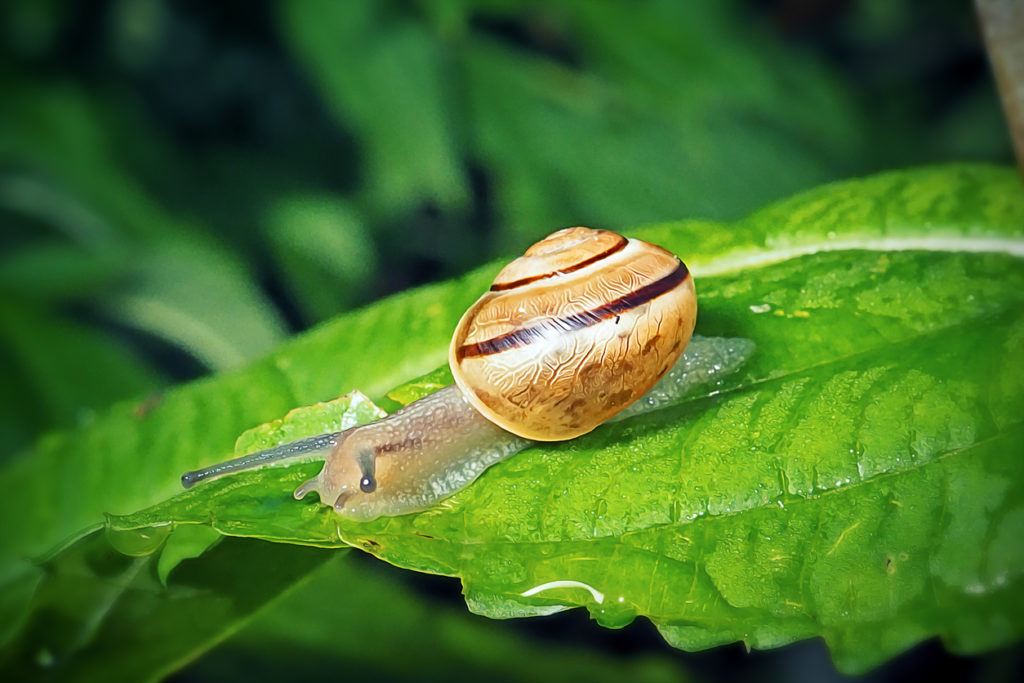
Slugs and snails are other common plant pests that can attack almost any plant. They tend to go for soft, lush plants, like Hostas and Dahlias.
How to Identify Snails
Snails are easier to identify because they are big enough to clearly see with the naked eye. They are small slug bodies with a hard shell and leave a sticky, slimy substance behind.
How to Treat Snails
Treat your snail-infested plant by using small piles of grit, eggshells, or prickly leaves around the plant. This will deter them from the plant because they won’t be able to cross over it. Using an organic slug barrier will also help treat snails and slugs.
Common Plant Pest #3: Vine Weevils
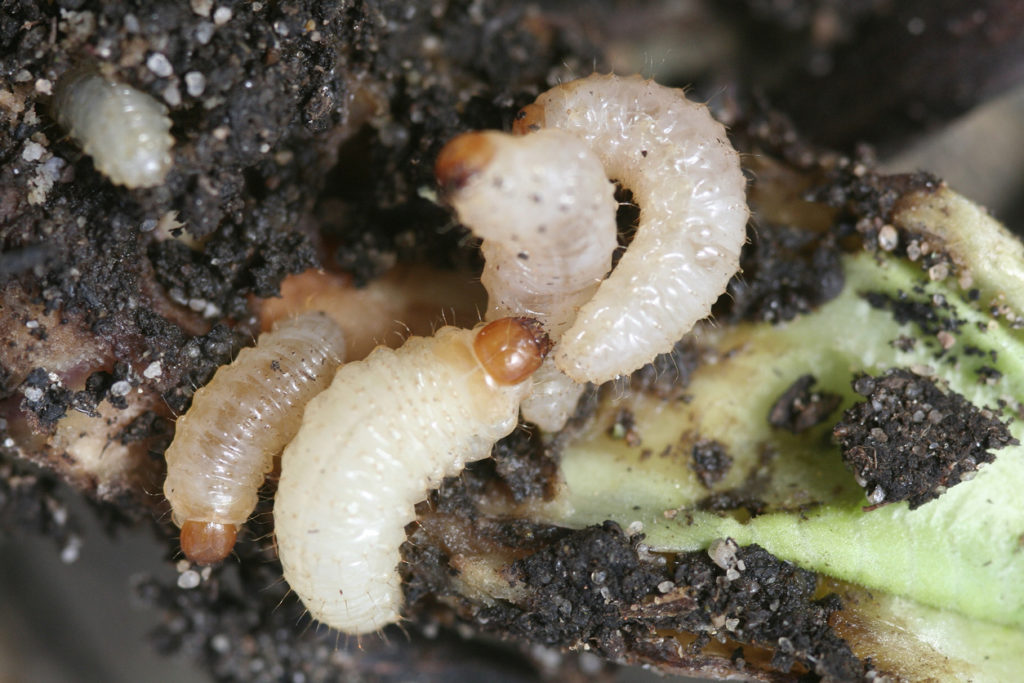
Vine Weevils first start out as Grubs. This is the stage when they’re most dangerous to plants because they attack the roots of young plants. This will then cause the leaf to turn yellow and wilt. Vine Weevils usually attack certain plants, like Cyclamen, Heuchera, or Primrose. However, they spread extremely fast among these plants.
How to Identify Vine Weevils
If you suspect you have Vine Weevil Grubs, then you’ll want to inspect the roots. For container plants, pull the plant out of its pot and look at the root system. If you have Vine Weevils, you’ll notice cream-coloured Grubs all along the roots. They look like large, fat maggots. If your plant is attacked by Vine Weevils after the grub stage, then you’ll find black, Beetle-like insects on your plant.
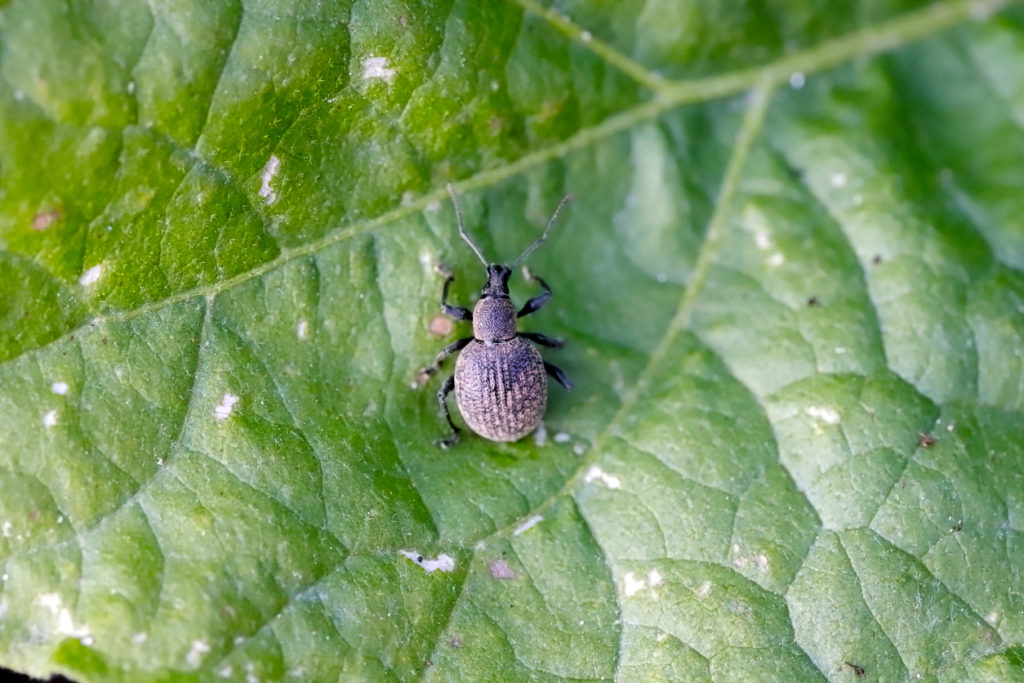
How to Treat Vine Weevils
It’s best to physically remove Vine Weevils. You’ll find them more active at night while they’re feeding, so they’re easy to spot by using a flashlight at night time. If they’re particularly difficult to remove, you may want to use a vine weevil killer. Afterwards, use an insecticide and spray the plant down.
Common Plant Pest #4: Mealybugs
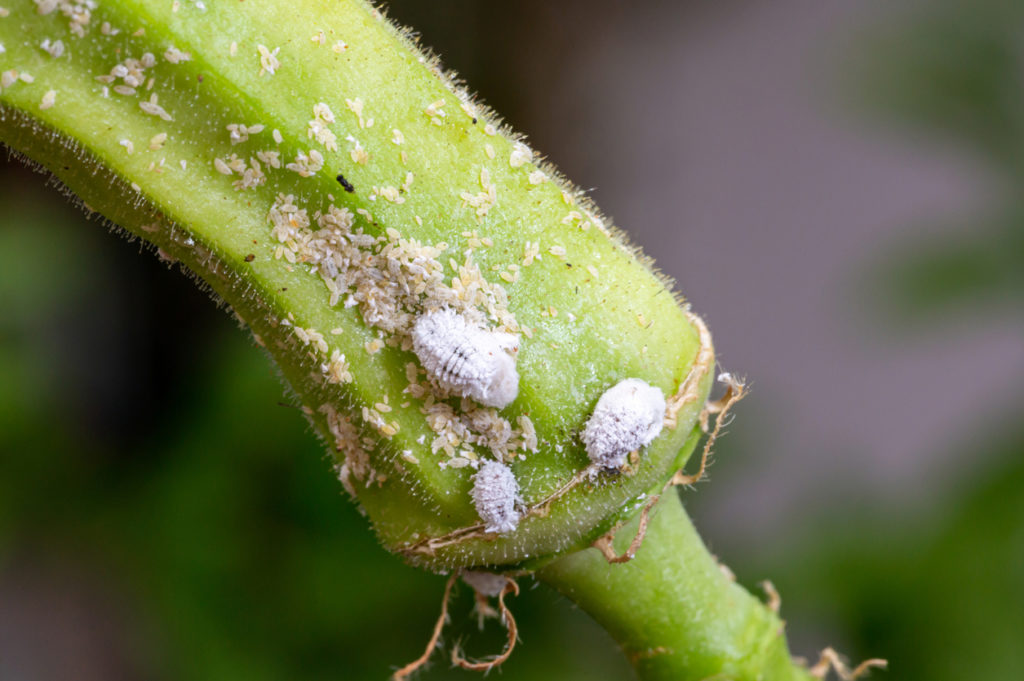
Mealybugs are often found on both indoor and outdoor plants. Because of their munching, they cause stunted growth, yellowing, and wilting of your plants.
How to Identify Mealybugs
You can easily spot Mealybugs by the cotton-like white webbing they produce. If you do spot them, they’re soft, oval insects that are white or grey in colour.
How to Treat Mealybugs
If you have a light infestation of Mealybugs, you can remove them with a cotton swab and some rubbing alcohol. For a bigger infestation, you may need to use an insecticidal soap or spray to combat these small insects.
Common Plant Pest #5: Thrips
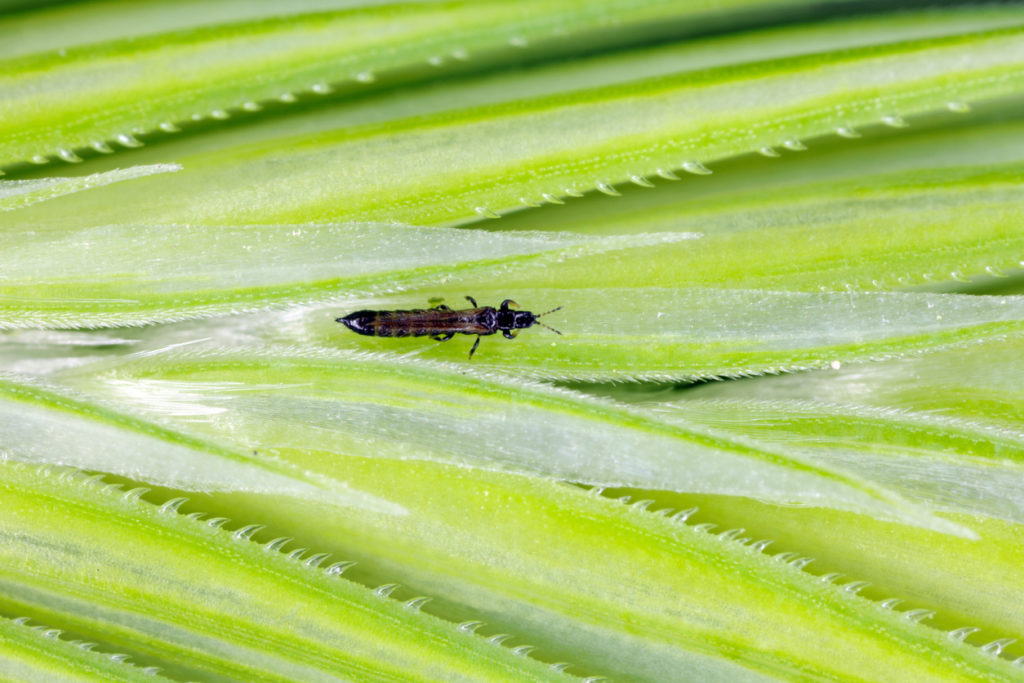
Thrips get their meals by sucking the sap or juice out of plant leaves, fruits, and flowers. You’ll notice your plant leaves turning pale or blotchy. Often, the leaves will then die.
How to Identify Thrips
Thrips are incredibly tiny, winged insects. The adults are yellow-coloured or black with two pairs of wings. They’re difficult to spot with the naked eye, but if you do see them, they may look like black threads.
How to Treat Thrips
Thrips are one of the common plant pests that are more difficult to get under control. You’ll need to use a combination of techniques to get rid of these winged insects completely. Use sticky traps placed in the soil to catch as many as you can. You’ll also want to spray your plant down with insecticidal soap to kill the remainder.
The Most Common Plant Diseases
As we mentioned earlier, most healthy plants can withstand a few pathogens. However, it’s not uncommon for plants to become sick with one of the many common plant diseases. It’s important to know which diseases your plants may be susceptible to, so you can treat them quickly before they weaken and die.
Plant Disease #1: Black Spot
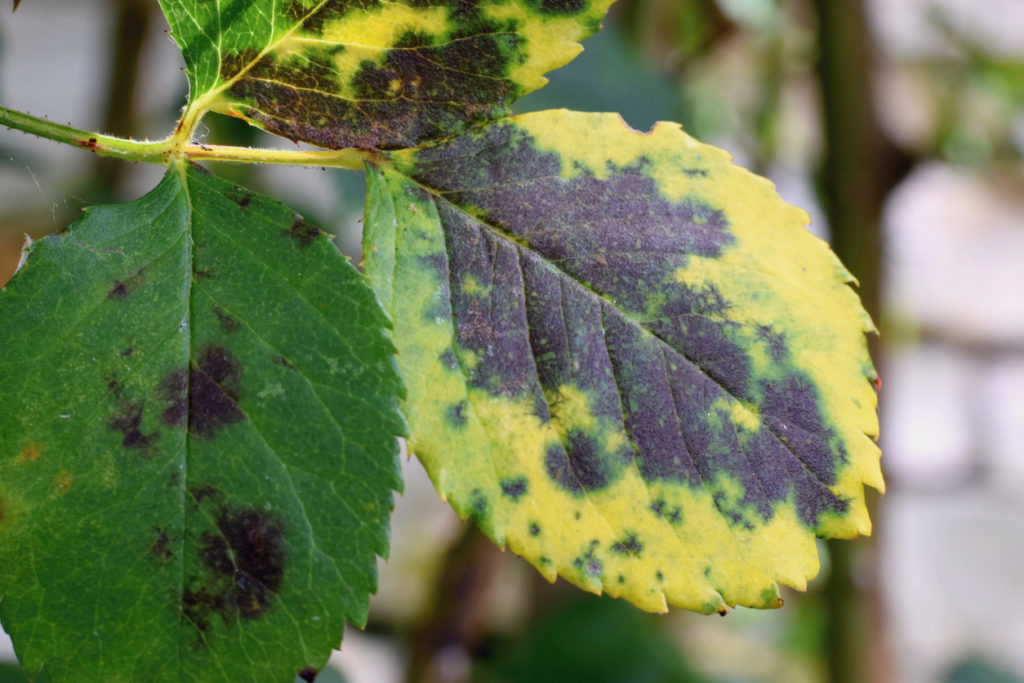
Black spot is one of the most common plant diseases found on roses. As you’re pruning your roses, make sure you take a quick look to ensure your plants are healthy.
How to Identify Black Spot
Black Spot is a fungal disease that creates black, irregularly shaped splotches on your rose bush leaves. As the disease worsens, the leaves will turn yellow and drop. The rose canes can also be affected if the Black Spot is left untreated for an extended period. As it is a fungal disease, Black Spot is brought in from wet conditions and cooler temperatures. It’s very common for it to appear from June onwards.
How to Treat Black Spot
Use a fungicide to treat roses suffering from Black Spot. Fungicides with sulphur and copper all work well in treating the fungal disease. Rose Clear is also a great product to use to keep it at bay. Spraying regularly at the start of the growing season is the best way to ensure rose bushes aren’t affected.
Plant Disease #2: Powdery Mildew
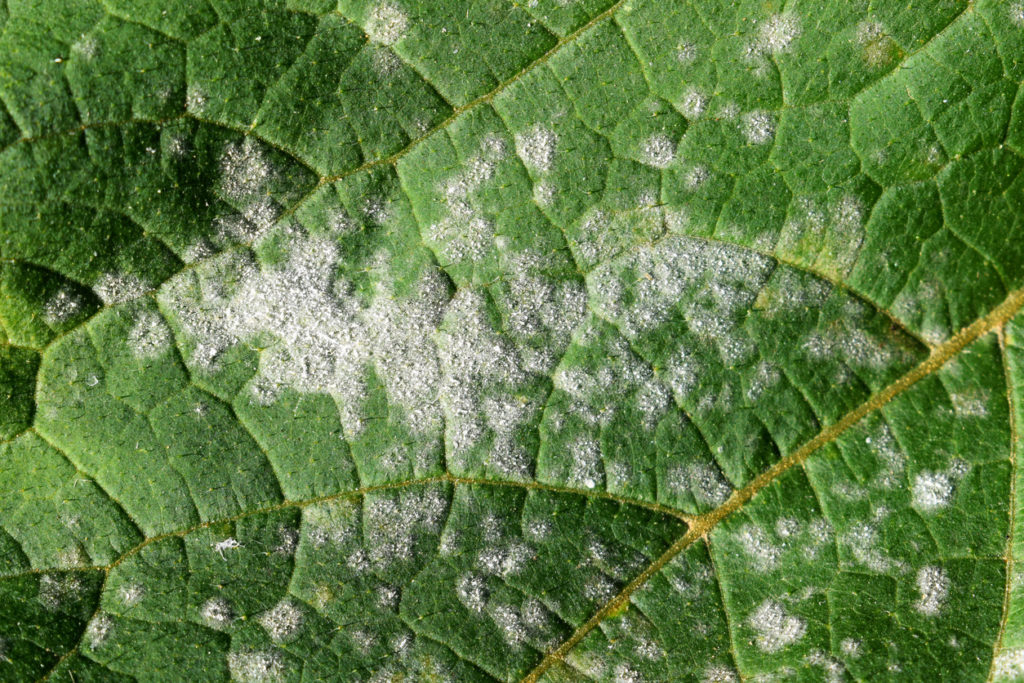
Powdery Mildew can affect both indoor and outdoor plants. This is another one of the common plant diseases that is brought on by a fungus. It’s normally caused by the drying out of plants. Often, tender bedding plants are affected during periods of drought.
How to Identify Powdery Mildew
Powdery Mildew is easy to spot. It shows up in white or light grey powdery blotches on the leaves of your plants. However, they can also show up on the underside of the leaves, on the stems, fruits, vegetables, or flowers. Be sure to check every part of the plant for it!
How to Treat Powdery Mildew
Most fungicides and other products on the market are equipped to treat Powdery Mildew. Use a Powdery Mildew fungicide that includes copper to help combat the disease.
Plant Disease #3: Brown Rot
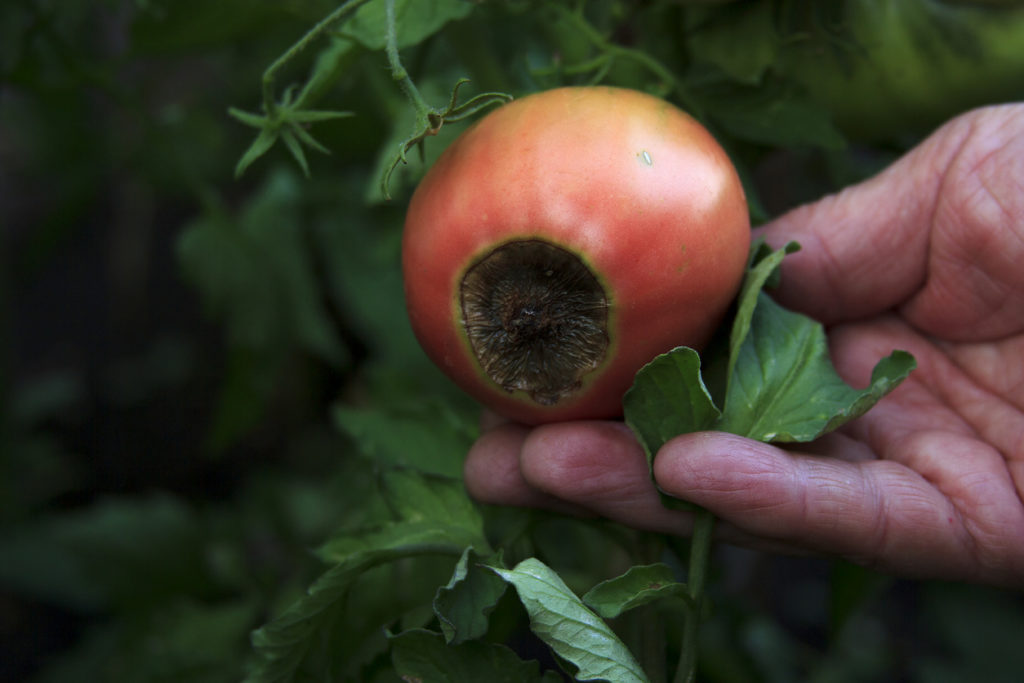
Another fungal plant disease, Brown Rot, primarily affects fruit shrubs and trees. Fruits typically affected include cherries, plums, peaches, nectarines, or apricots.
How to Identify Brown Rot
Flowers of fruit trees that are affected by Brown Rot produce brown spots on their petals. Eventually, the blossoms collapse. After, they may produce a sticky material that attaches to twigs, which can cause more infection. Fruits that develop Brown Rot turn brown and produce small, raised white bumps all over them.
How to Treat Brown Rot
Fortunately, Brown Rot on your fruit trees or shrubs is not a death sentence. However, all affected fruits need to be immediately pulled from the plant and disposed of. Prune any infected twigs 10-15 centimetres past the dead or infected tissue. Burn or bury the branches and twigs to prevent spreading. Be sure to clean your tools before moving on to any other plants!
Plant Disease #4: Root Rot
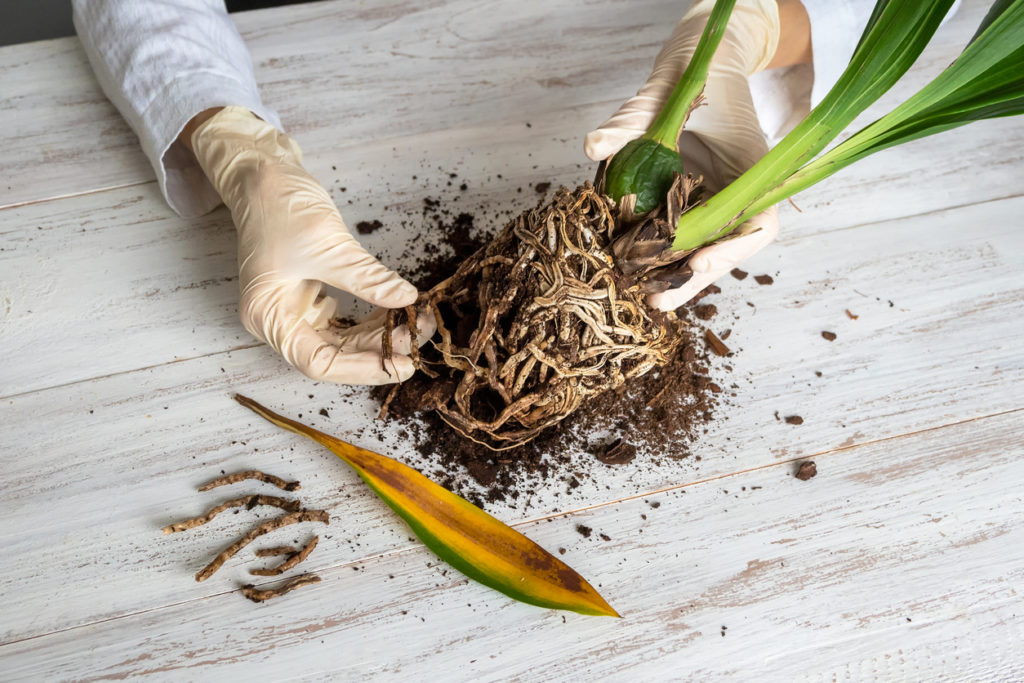
Root Rot is a common bacterial infection among house plants. Often, because indoor plants sit in containers, they can become waterlogged. This is usually from an overwatering schedule. The root systems of the plants die because the water doesn’t allow them to receive the oxygen they need. Since the plant disease is bacterial, it can spread to other, healthy roots, and start to kill those too.
How to Identify Root Rot
Dulling or yellowing leaves are some of the first signs of Root Rot. If you see this happening, and nothing you try seems to correct it, then it may be a good time to check the plant’s roots. Pull the plant from the pot and feel the roots. If they've been affected, they will feel mushy to the touch and black in colour. Some roots may fall off as soon as you touch them.
How to Treat Root Rot
The sooner you can treat Root Rot, the better! Wash the roots under running water to rinse away as much soil as you can. With clean, sharp shears, trim any affected roots. You may have to remove a large amount of the root system. If that’s the case, clean your shears with rubbing alcohol and prune your plant’s leaves by one-third to one-half of the plant. The root system will be able to support a plant of a smaller size.
Thoroughly wash the container it was in, so you don’t re-infect the plant. Dip the roots of your plant in a fungicide solution or dish soap to kill any remaining root rot. Then re-pot the plant with clean, well-draining potting mix. Make sure your pot has a good drainage hole so any excess water can run through!
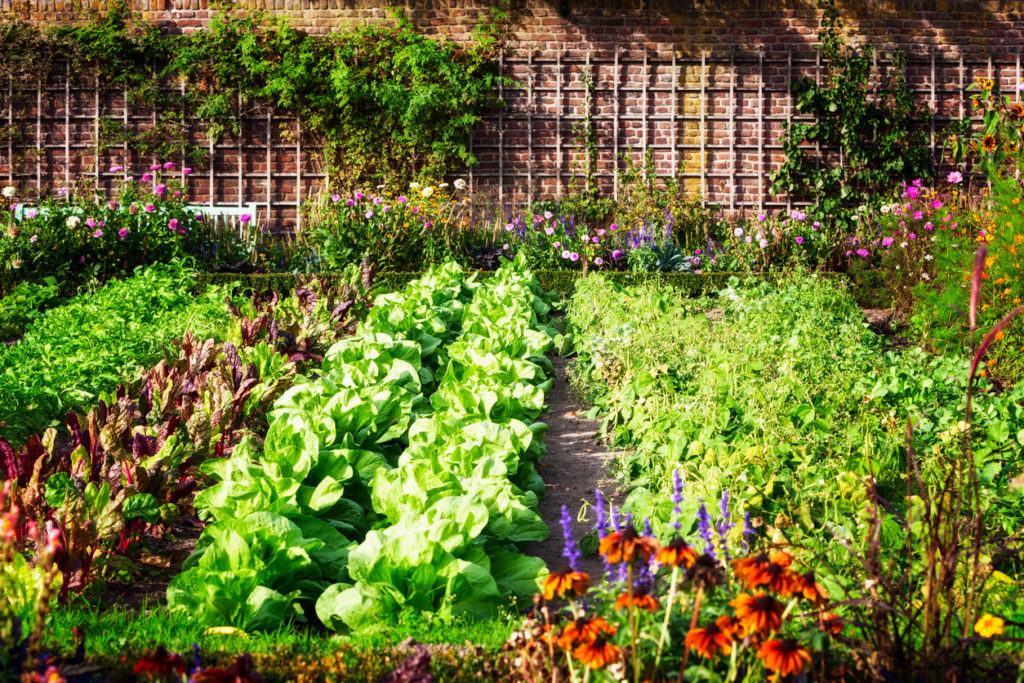
Even the most experienced plant owner or gardener deals with struggling plants due to these conditions. Fortunately, identifying and treating the most common plant pests and diseases just got easier!
If you need the best products to help you treat your plants, we have all the garden supplies you’re looking for.
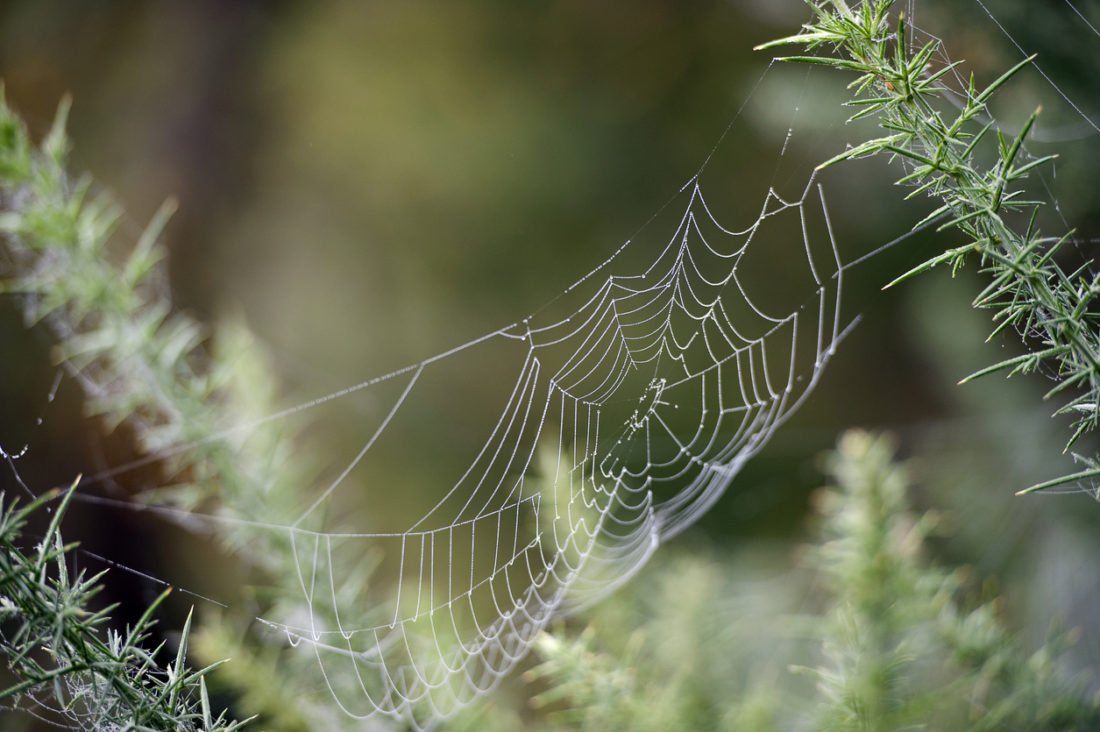
- Lawn & Garden
How to Get Rid of Ants, Flies, Spiders, and Mice: The Ultimate Guide to Home Pest Control
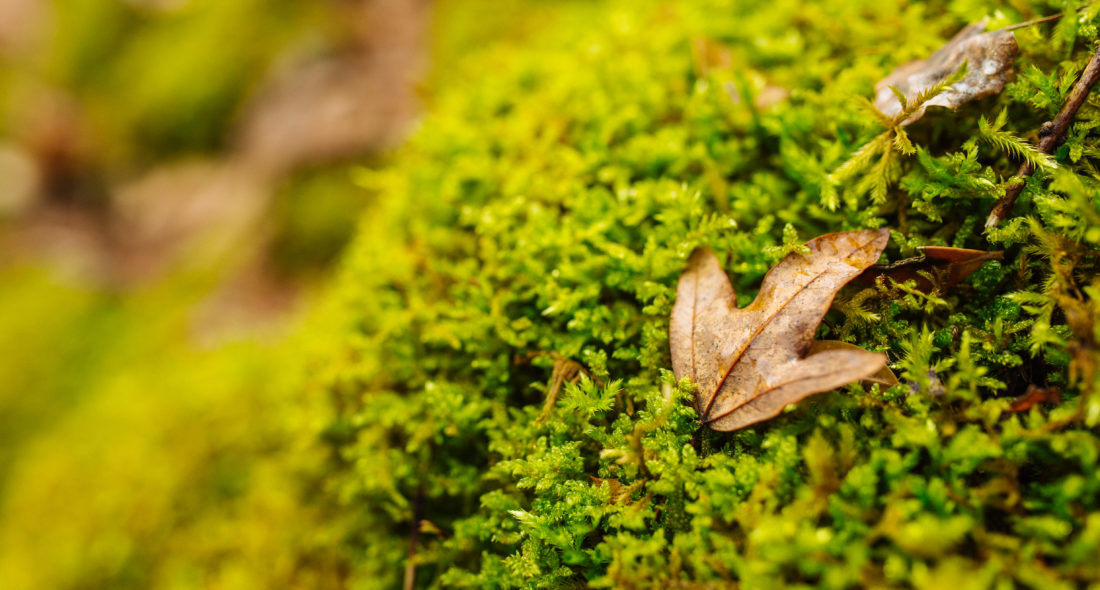
- Lawn & Garden
How to Remove Moss From a Lawn
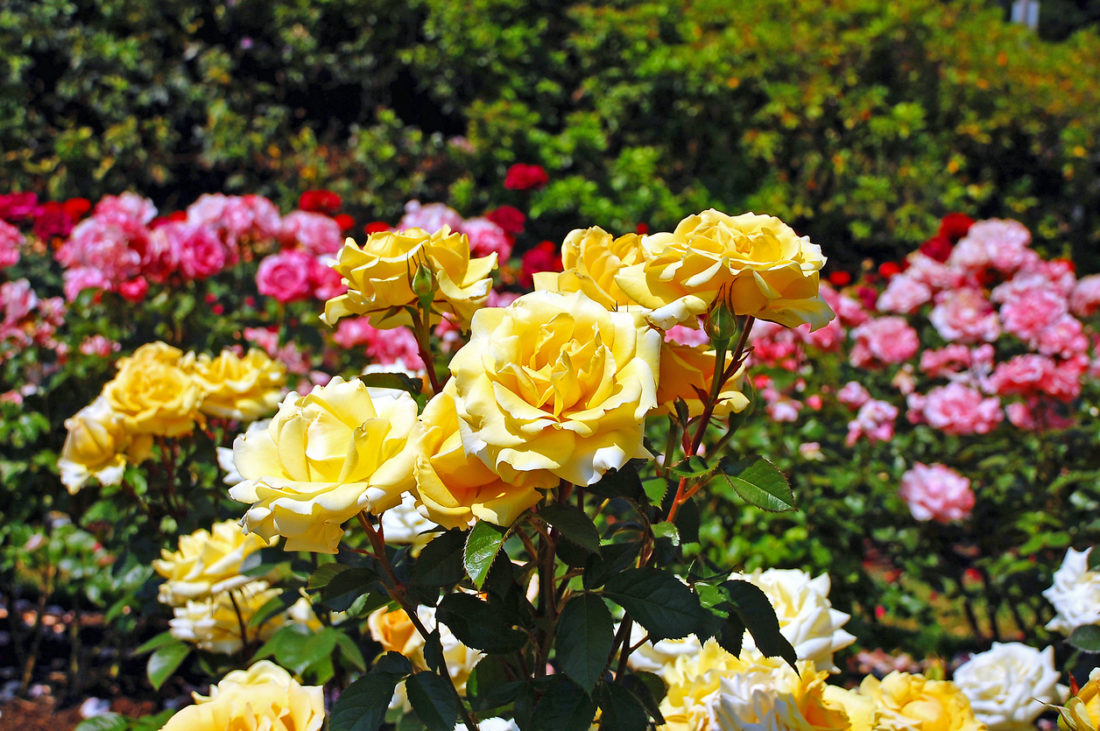
- Lawn & Garden
How to Prune Roses in 6 Easy Steps
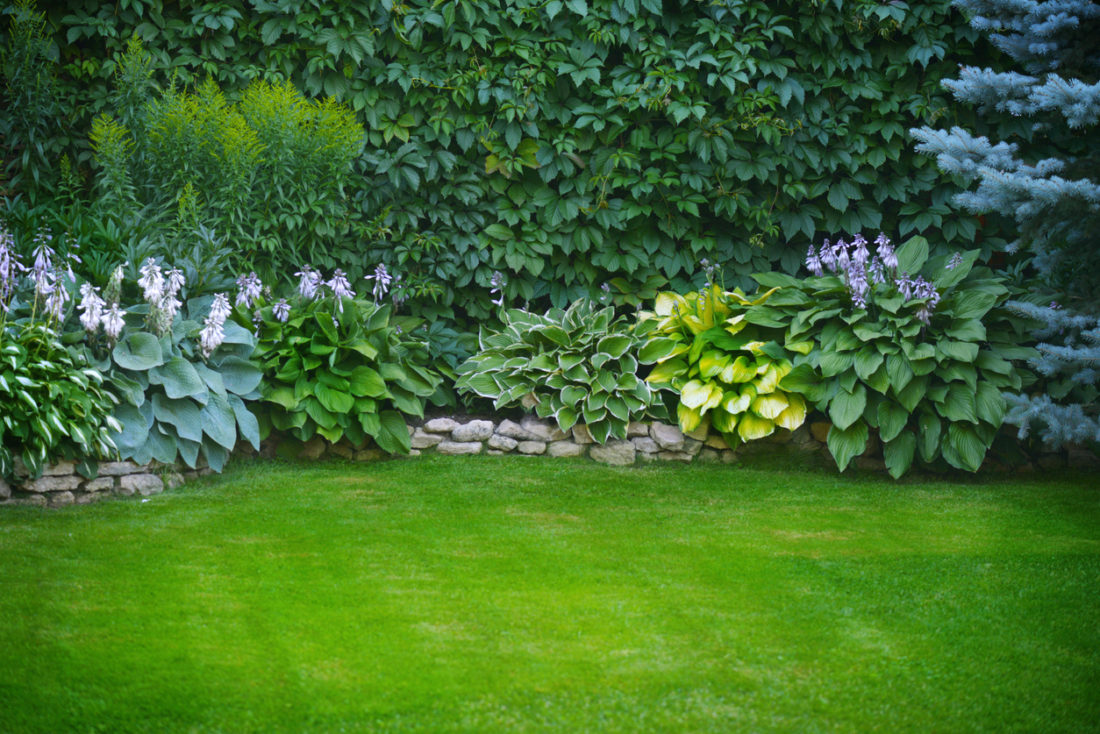
- Lawn & Garden
A Complete Guide on How to Sow Grass and Take Care of Your Lawn
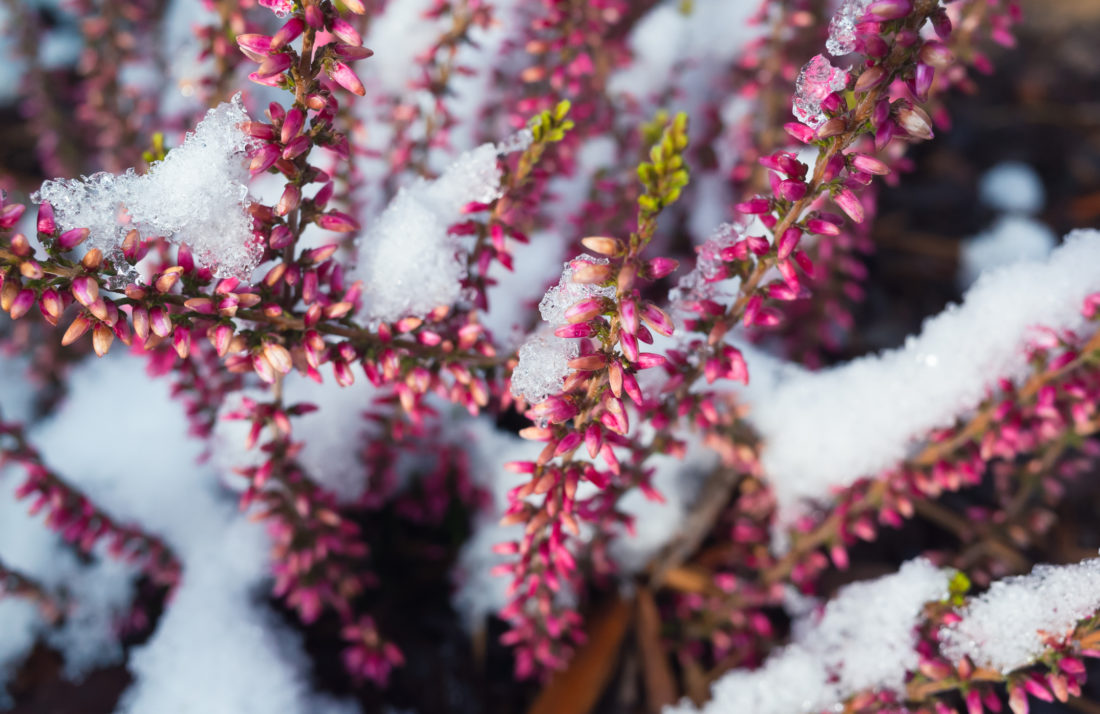
- Lawn & Garden
Winter Gardening Jobs
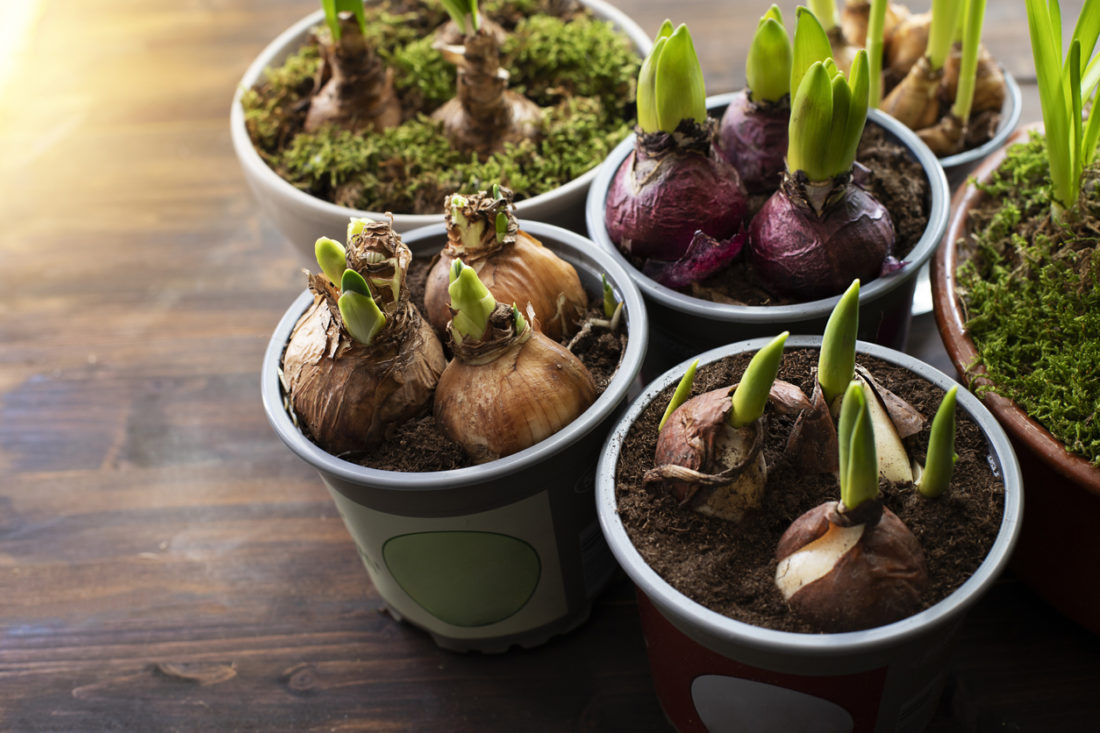
- Lawn & Garden
